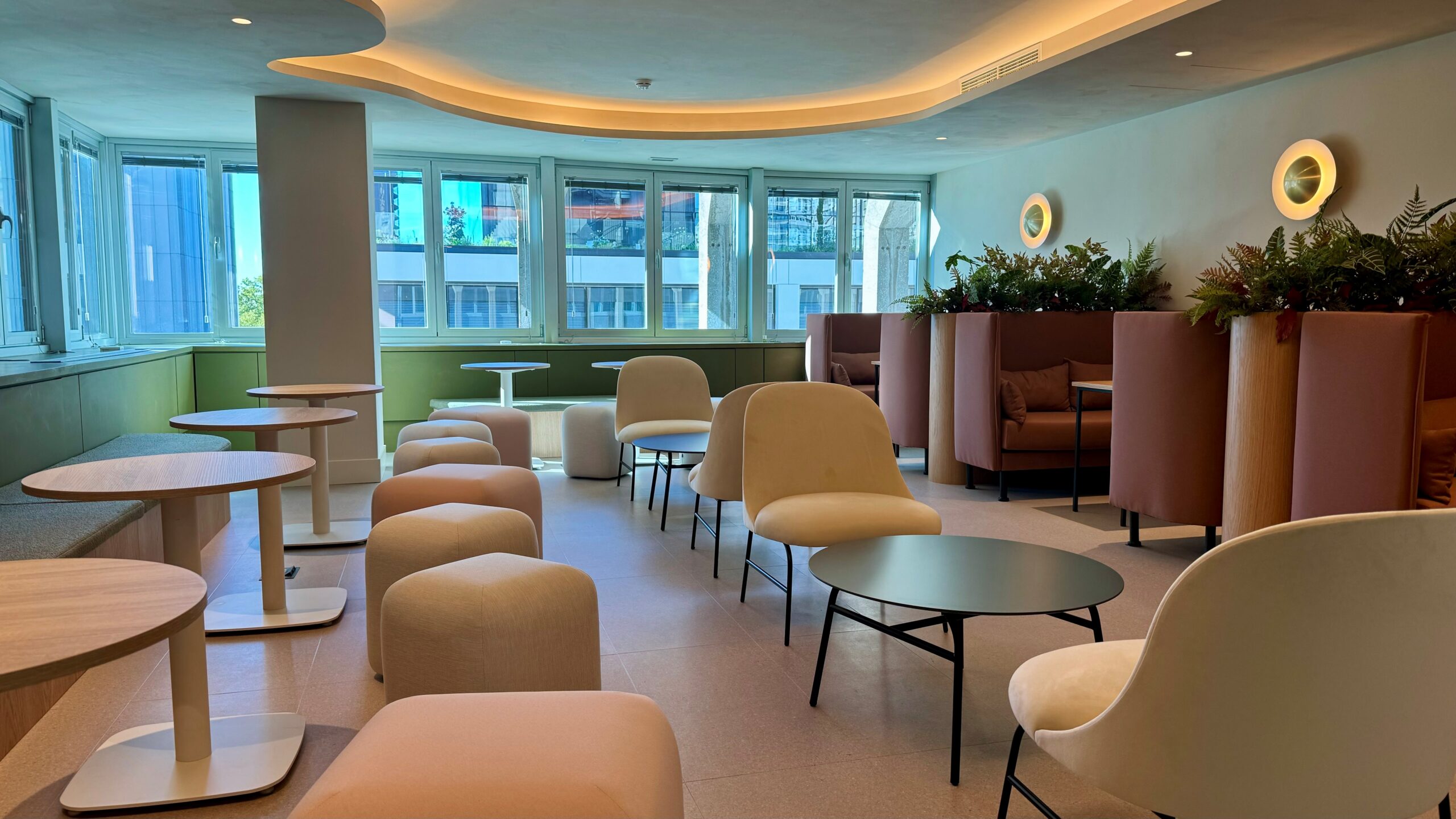Networking has become a fundamental tool in the business world. It is no longer enough to have a good idea or an innovative product; personal relationships play a crucial role in the success of any business. In an increasingly competitive environment, building a solid network of contacts is one of the most effective ways to gain opportunities, learn from other professionals and position a company in the market.
Networking is not just about attending events or exchanging business cards. It is about creating genuine and mutually beneficial connections. In many cases, important decisions, such as choosing a supplier, recommending a service or even selecting a strategic partner, depend more on trust and relationship building than on numbers or formal introductions. An entrepreneur who masters the art of networking is able to open doors that might otherwise have remained closed.
Business relationships, when managed correctly, can be the engine that drives a company’s growth. Through networking, you not only gain access to new customers or investors, but you can also discover opportunities for collaboration, mentoring and professional development. In addition, being surrounded by people with different perspectives and experiences provides valuable insights and advice that can make all the difference in the growth of a project.
At the end of the day, business is about people. Knowing how to connect with them, deliver value and build trust is what truly drives a company forward. Networking is therefore a long-term investment in the future of any business.

Strategies for effective networking
Effective networking is not just a matter of accumulating contacts, but of knowing how to identify the key people who can add value to your business. It is important to be clear about what kind of connections you are looking for and what objectives you are pursuing when you interact with other professionals. Not all contacts have the same weight or relevance for your project. Therefore, one of the first strategies is to define which profiles can help you grow, whether they are potential clients, strategic partners, suppliers or even mentors who can offer you their experience.
Once you are clear about who you are interested in meeting, it is essential to know how to approach other entrepreneurs and professionals. It is not about entering into a conversation with the sole intention of selling your product or service. On the contrary, the first thing is to generate a genuine conversation, take an interest in what that person does and look for common ground. Listening before talking is key, as it shows respect and allows you to find possible connections beyond the obvious. The most productive encounters don’t usually come from a hurried introduction, but from a conversation where both parties feel they have something to gain.
However, what really makes the difference in networking is authenticity. The strongest professional relationships are built on sincerity and a genuine interest in helping others. Feigning interest or trying to look like you are not may be good for a one-off meeting, but it won’t create long-term bonds. In the end, people seek to work with those they trust, and trust is only built when you are honest about who you are and what you can bring to the table. Successful networking is not how many cards you collect, but how many meaningful relationships you cultivate.
Differences between face-to-face and digital networking
In today’s world, networking has evolved, and it is now possible to connect with people from all over the world without having to move from one place thanks to digital platforms. LinkedIn has become an essential tool for professionals and entrepreneurs. It offers the possibility of making contacts quickly and efficiently, participating in interest groups and sharing content that reinforces your personal brand.
In addition, virtual events and webinars make it possible to attend conferences, lectures or meetings regardless of distance, which greatly expands networking opportunities. The main benefit of digital networking is its immediacy and reach, as you can interact with professionals from anywhere, without the need to travel.
Despite the advantages of digital, the value of face-to-face contact remains irreplaceable. Face-to-face events offer a closeness that cannot be matched in the virtual environment. The ability to speak in person, read body language and establish a deeper connection facilitates the creation of more authentic relationships.
At a physical event, interaction tends to be more fluid and less structured, which can lead to unexpected conversations that would not have occurred in an online environment. In addition, the impressions you make in person tend to be more lasting and memorable.
The key to making the most of networking is to know how to combine both approaches. Participating in digital events allows you to maintain a large and active network, while face-to-face meetings help to consolidate those relationships. You can start a connection on LinkedIn, exchange ideas through messaging and then consolidate the relationship in a face-to-face meeting. This balance allows you to get the best of both worlds: the efficiency of digital and the depth of face-to-face.
How to prepare for a networking event?
To get the most out of a networking event, preparation beforehand is essential. It’s not just about arriving and starting talking to everyone. Researching the attendees and the key companies that will be participating can make all the difference. Knowing who will be there allows you to identify the people you’re interested in connecting with and better prepare your conversations. Knowing details about their business or roles will help you make a positive impression right from the start.
Another crucial aspect is to have an attractive personal pitch ready. It should be brief but powerful enough to capture the other person’s attention. You should be able to explain who you are, what you do and what you can offer in a few seconds, but without sounding robotic or rehearsed.
The key is to find a balance between naturalness and clarity, adapting it to the context of the conversation. A good pitch should not only inform, but also arouse interest and open the door to a deeper dialogue.
In addition, having some practical tools will make your job easier. Having well-designed business cards is still useful in many environments, as it is a quick way to leave your details. However, nowadays it is equally important that your LinkedIn profile is optimised.
Many contacts will go directly to this network to find you, so having a well-groomed professional presence, with an appropriate photo, a clear description of your activity and examples of your work, can be decisive to continue the conversation after the event.
Tips for breaking the ice and connecting
Starting a conversation at a networking event can seem intimidating, but with a good attitude and some preparation, it can be easier than you think. The first thing is to be aware that everyone is there for the same thing: to connect. An easy way to break the ice is to comment on the event itself, the talk you’ve just heard or even something as simple as the venue or organisation.
This creates common ground and opens the door to a more natural conversation. Another option is to approach someone who is alone, which is always welcome, as many people feel just as nervous at first.
Once the conversation has started, asking open-ended questions is key to really getting to know the other person. Questions like “What do you do?” or “What brought you to this event?” are simple and effective to start with, but you can also dig a little deeper with questions like “What are the biggest challenges you face in your business?” or “What are you most excited about in your industry right now?”.
These questions will not only help you understand the other person better but will also show that you have a genuine interest in what they do, which is always appreciated in this kind of environment.
Last but not least, there is active listening. It’s not just about hearing what the other person is saying, but showing interest and paying attention to detail. Nodding, maintaining eye contact and responding in a way that shows you understand what they are saying creates a stronger connection. People value feeling listened to, and when you do this in an authentic way, you increase your chances of building a long-term relationship of trust.
Building long-term relationships
Building long-term relationships is one of the main goals of networking. However, it is not enough to exchange business cards or connect on LinkedIn during an event. The real challenge comes afterwards, when you need to maintain contact in a natural and meaningful way. A good way to do this is to send a follow-up message after the event, thanking for the conversation and showing interest in continuing it. This simple gesture already makes a difference and makes it clear that you value the connection.
Leveraging social media, especially LinkedIn, is a great way to stay present without being intrusive. You can interact with the content the other person posts, share articles they might find interesting or even comment on their posts.
This helps to strengthen the relationship without the need to constantly send messages. Email is also a powerful tool if used in moderation. Sending a personalised message from time to time, to share a relevant news item or ask a specific query, can be useful to strengthen the bond in a professional manner.
But the real key to building lasting relationships is to give value before asking for something in return. Instead of focusing on how that connection can benefit you, think about how you can help first.
Offering a recommendation, sharing a useful contact or simply being available to help, without expecting anything in return, builds trust and reciprocity. Over time, these small actions create a relationship based on mutual support, which is much stronger and beneficial in the long run.
Networking in workspaces
Networking in a coworking space offers unique opportunities not found in other environments. At Ibercenter, we believe that working in a shared space not only makes day-to-day life easier, but also opens the door to valuable connections. The simple fact of being surrounded by other professionals, entrepreneurs and companies creates an environment where synergies arise naturally.
For example, in our coworking space in Madrid it is not uncommon that, between breaks, collaborations, joint projects or even new business opportunities arise. Sharing the same physical space can help you find your next client or collaborator without leaving your office.
At our centre, we encourage interaction between users, because we know that the key to success often lies in the relationships that are formed in the right environment. The easiest way to connect with other professionals in a coworking space is to start with the basics: a casual conversation. Whether in the coffee area or in the corridors, an informal chat can be the first step towards an important collaboration.
At Ibercenter, we offer an environment designed so that you can work on your business, but also surround yourself with other professionals with whom you share interests and goals. We know that, in many cases, networking in a coworking space is what drives companies to grow and find new ways of doing business, and we are proud to be able to facilitate these meetings. We like to go the extra mile in our office rental service in Madrid and meeting room rental in Madrid.
Common networking mistakes
In the world of networking, it is easy to make certain mistakes that can hinder the creation of solid relationships. One of the most common is being overly pushy. It’s natural to want to generate opportunities as quickly as possible, but putting too much pressure on someone or insisting on getting an immediate response can be counterproductive.
Networking requires patience and knowing how to respect each person’s time. Professional relationships are not built in a single day, and it is important to be aware that, for a connection to be genuine, both parties must feel comfortable.
Another common mistake is to focus solely on selling. Although the ultimate goal of networking is to find opportunities for your business, approaching every conversation from a purely commercial perspective can alienate people. The key is to build relationships first, without the pressure to sell something immediately.
By building trust and showing that you really care about what the other person is doing, opportunities will come more naturally and organically. Networking is based on reciprocity, and the best professional relationships tend to arise when there is a mutual exchange of value.
To avoid superficial networking, it is essential to take advantage of real connections. It’s not just about accumulating contacts, but about taking the time to get to know the people you are networking with. This means taking an interest in their projects, their challenges and their goals.
In the long run, genuine connections will be far more valuable than an endless list of contacts that mean nothing. If you focus on cultivating quality relationships rather than quantity, you will be building a solid network that will support you at key moments in your business.
Conclusion
Networking has become one of the fundamental pillars for the growth of any business. Throughout this journey we have seen how identifying the right contacts, preparing a good pitch and taking advantage of both digital platforms and face-to-face events can open doors to unexpected opportunities.
Building authentic relationships, maintaining contact and giving value before asking for something in return are key strategies for strengthening those connections in the long term. Successful networking is not about the number of people you meet, but the quality of the relationships you cultivate.
In the end, business is not just about numbers or transactions, it is about people. Networking allows you to surround yourself with those who can directly influence the success of your project, whether through new clients, strategic partners or mentors to guide you through difficult times.
When done intelligently and genuinely, networking becomes an indispensable tool for any entrepreneur seeking to grow, innovate and consolidate in the market. The relationships you build today can be the determining factor for the success of your venture tomorrow.






